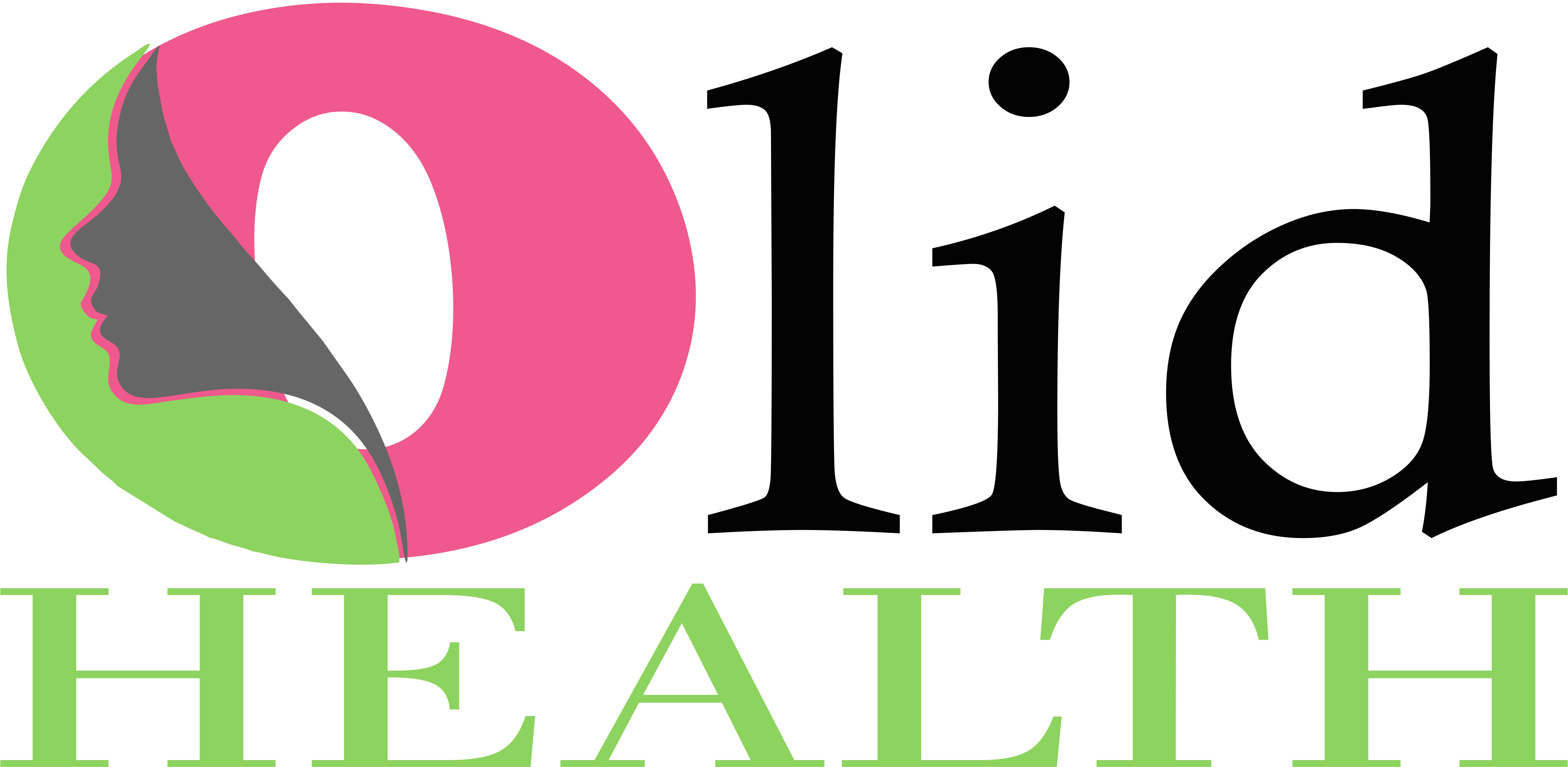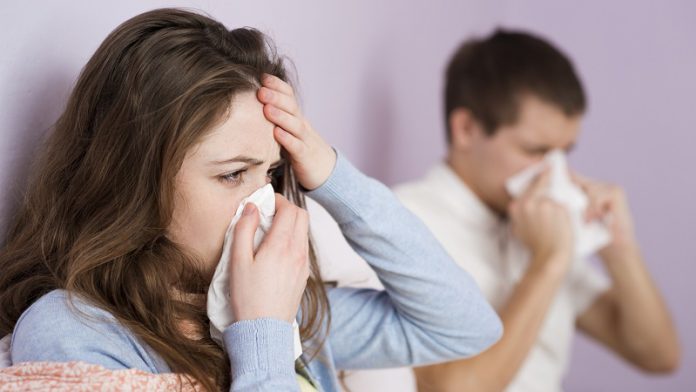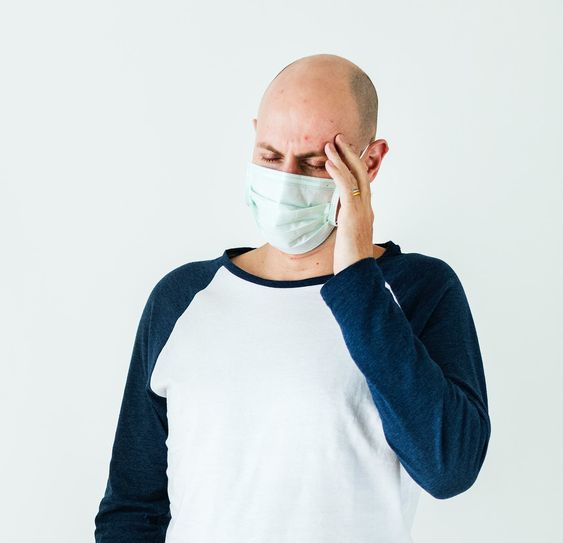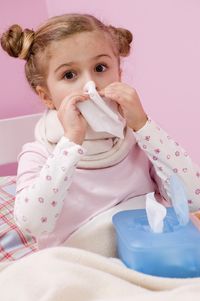Olidhealth.com – If you have a low immune system and there are pathogens all around you, It could coincidentally infest your body. Usually, viruses can be inhaled and stay in your lung to replicate and make you sick. There are well-known diseases that are caused by viruses infection such as cold, allergy, flu, and COVID-19 as a new variant virus disease. Well, before you can treat yourself by consuming medicine or herbal remedies, you should know how to spot the difference between them. On top of that, these kinds of diseases may have similar symptoms to each other. How to distinguish its symptom and early treatment to relieve it? This article will show you the way to spot it before wear off your body.
Are These Diseases Harmful?
Sure enough, these diseases have a certain degree of severity, but it is all matter of time and how to treat them. For instance, flu and cold have mild symptoms, to begin with. While allergy and COVID-19 may have intense severity depending on its stage. Some medications can ease the symptom soon after being infected and vaccines could prevent this disease happen.
A Cold Could Be a Common Illness
Cold is a common disease and can happen regardless of age and gender. Moreover, it can be a seasonal illness if come to the winter and fall season since cold air brings pathogen all over the place. Most people’s health is also affected by certain seasons that lower their immune to defend against it. Like viruses diseases, a common cold is caused by rhinoviruses that have symptoms like fever and coughing.
People Could Have Severe Allergy
If someone has an allergic reaction like itching, coughing, or severe vomiting, it needs medical attention as fast as could. On other hand, allergies can be as simple as sneezing and runny nose alone. Allergy triggers can vary due to specific reasons. For example, nuts allergy is caused by body reactions mistaking nut compounds as a dangerous substance. While pollen allergy or known as hay fever is a seasonal disease in that people can accidentally inhale airborne pollen and trigger symptoms such as swelling, itching, and runny nose. However, allergies also can be triggered by viruses in recent studies [1].
People with this case are hard to be cured and sometimes can be troublesome for choosing what they consume daily. Moreover, swelling caused by this disease also can clog the airway and make the hard to breathe. It may have similar symptoms to other viruses diseases, so we should know how to differ this matter.
Flu As a Seasonal Disease
Flu and cold may have a majority of similar symptoms but the trigger can be different. Influenza is another name for this disease and has many types depending on the virus itself [2]. Furthermore, flu also can be spread to a family, relatives, or even workers in the same facility. Several countries are using seasonal vaccines to prevent this disease spread over. However, people who have this vaccine just have a lower risk of influenza and could be infected. this disease also could be misinterpreted as COVID-19 since also have similar symptoms.
COVID-19 As The New Challenger
In recent years, COVID-19 outburst to be a new disease that infected all over the world [3]. It easily spreads out within airborne and may have serious severity for people with conditions. Many nations have declared to fight this disease by inventing the vaccine and strictly have health protocol by using surgery masks and effectively washing hands. There are variants of COVID-19 like Delta that are highly harmful and Omicron with less active yet still dangerous. Both of them may have similar symptoms, so the difference is on their property.
Flu and COVID-19 may have similar symptoms since they are both viruses diseases. COVID-19 comes from SARS-CoV-2 while flu is Influenza viruses. As researchers are concerned, they could be evolved into dangerous ones, but researchers still fighting to find cost-effective medication to stop these viruses.
How To Tell The Difference Between Them By Its Symptom
Some people may hard to spot the difference between these diseases since it is so close and slightly have distinctive features to tell apart from it. Early diagnosis can be important to know the next step after that. If you can tell an apart between them, you can choose the right medication before became worse. There is a common symptom that we can close up to find the difference within it such as sneezing, runny nose, cough, eye discomfort, fever, muscle pain, diarrhea, weakness, itchy, nausea, sore throat, vomiting, hard to breathing, loss of taste, and loss of smell. We can pinpoint these symptoms as early diagnose to treat is as fast as possible.
Sneezing
Simple symptom as sneezing can be a sign to differentiate the virus’s disease. Sneezing occur rarely in COVID cases, but relatively happen in flu and cold since it also affects sinuses. Pollen allergy could behave worse sneezing because it is a normal reaction to release malicious substances out of the body.
Cold
Allergy
Flu (Influenza)
COVID-19
: Sometimes happen
: Frequently
: Sometimes along with a watery nose
: Rarely happen
Runny nose
As we mentioned before, a runny nose can occur in flu and cold because the virus may infest sinuses and release excess mucus to trap it. All viruses disease commonly have this symptom as early prevention for viruses to advance into the body. However, it also can deplete bodily fluid, so take adequate water to relieve this symptom.
Cold
Allergy
Flu (Influenza)
COVID-19
: Usually, happen
: Could happen on pollen allergy
: Frequently with stuffed sinuses
: Frequently, but not always
Cough
Coughing is a typical reaction to release mucus that blocks breathing passageway. Influenza commonly has this symptom along with cold and COVID-19. However, allergies rarely have cough unless it is related to asthma. If your child is coughing, there are various ways to treat it. Check other articles on how to get rid of coughing quickly.
Cold
Allergy
Flu (Influenza)
COVID-19
: Frequently
: Sometimes with asthma symptom
: Frequently
: Frequently with dry-like coughing
Eye Discomfort or Conjunctivitis
Red-eye with burning and itching is a normal symptom of pollen allergy. Yet, flu and COVID019 sometimes can occur conjunctivitis. The symptom itself can cause by bacteria or viruses. It also can happen with the common cold [4].
Cold
Allergy
Flu (Influenza)
COVID-19
: Rarely, but sometimes can trigger cold
: Sometimes, with burning discomfort
: Occur with fever
: Sometimes happen in some case [5]
Fever
Fever is commonly happened on viruses infection to fight the disease by increasing body heat. On top of that, cold, flu, and COVID-19 surely have these symptoms. Allergy doesn’t have this symptom because in the first place allergy is a unique condition that varies from each person.
Cold
Allergy
Flu (Influenza)
COVID-19
: Sometimes happen
: Never
: Frequently, but not always happen
: Frequently
Muscle Pain
This symptom usually occurs along with fever, so muscle pain has similar symptoms as fever does in virus infection cases. Muscle aches happen caused by inflammation within muscle tissue. It sometimes makes the body lethargic and tired.
Cold
Allergy
Flu (Influenza)
COVID-19
: Sometimes
: Never
: Occur frequently
: Frequently
Weakness
People who exposure to these diseases are usually sluggish and feel weak. It is because your energy concentrated to eliminate the invader and trying to recover from it. Viruses disease commonly have this symptom and its severity depends on your body’s immune.
Cold
Allergy
Flu (Influenza)
COVID-19
: Sometimes happen
: Rarely in some cases
: Frequently
: Frequently
Itchy
Craving to scratch your skin especially your nose or eye is a condition of this symptom. Generally, having an itchy feeling on the mouth, ear, nose, or eye is common for allergy and sometimes occurs in a patient with flu. However, Cold and COVID-19 don’t have these kinds of symptoms.
Cold
Allergy
Flu (Influenza)
COVID-19
: Never
: Frequently
: Sometimes on nose only
: Never happen
Diarrhea
In some cases, Diarrhea could happen as ingestion dysfunction caused by infection. However, it does not usually happen in allergy and cold diseases. Children with Influenza could occur this symptom since other symptoms make it hard to have adequate nutrition. Some studies believe that diarrhea could be a symptom of COVID-19 [6]. So, see the doctor if other symptoms are matched with this disease.
Cold
Allergy
Flu (Influenza)
COVID-19
: Never
: Never
: Sometimes in children’s patient cases
: Sometimes
If you getting annoyed with diarrhea, simple home remedies can relieve this symptom. Read our article about soothing diarrhea with home remedies and medication.
Nausea
Nausea can happen along with loss of appetite and feeling full on the stomach. This symptom could be a sign of COVID-19 and flu [7]. If you feel nausea with severe vomiting, dring more warm water to alleviate the symptom in meantime and call the doctor if necessary.
Cold
Allergy
Flu (Influenza)
COVID-19
: Never
: Never
: Sometimes
: Sometimes
Sore throat
Sore throat caused by inflammation in the lining of the respiratory system is commonly happening in this typical disease. Moreover, you can relieve it with simple medication such as consuming honey with warm water.
Cold
Allergy
Flu
COVID-19
: Frequently with coughing
: Rarely happen
: Frequently
: Happen Frequently
Hard to Breathing
If you have this symptom, it may be caused by swelling on the breathing passageway. Flu and COVID-19 usually have this condition. Moreover, SARS-CoV-2 could build up excessive mucus on the air sac and limit air intake. In a worse case, the patient may need air support as a ventilator to help them breathe.
Cold
Allergy
Flu (Influenza)
COVID-19
: Never
: Rarely, but common in allergy asthma
: Frequently with a stuffy nose
: Occur frequently
Vomiting
Vomiting usually comes with nausea symptoms since it aggravates the stomach to release the juice as a repulsive reaction to fight malicious substances. Cold and allergy don’t have this symptom. However, in some cases, it occurs on influenza and COVID-19.
Cold
Allergy
Flu (Influenza)
COVID-19
: Never
: Never
: Sometimes with nausea symptom
: Sometimes, but not always
Loss of taste
Sometimes, you can’t feel the taste of food during your sick day. Be careful, having loss of taste since it distinctive feature of COVID-19 infection [8]. Allergy and flu rarely have this symptom and cold may have it sometimes.
Cold
Allergy
Flu (Influenza)
COVID-19
: Sometimes happen, with a runny nose
: Rarely
: Rarely happen
: Frequently, as a distinctive sign
Loss of smell
A clogger or runny nose can hinder the nose to smell something. Cold, Allergy, and influenza sometimes have a loss of smell by this condition. However, COVID-19 is something else. Without this condition, you can’t smell if you are infected by COVID-19 [G].
Cold
Allergy
Flu (Influenza)
COVID-19
: With a stuffy nose, it sometimes happens
: Sometimes if have a clogged nose
: Runny nose sometimes trigger it
: Frequently, as a distinctive sign
When To See The Doctor
If your sickness gets out of control and worsens, call your doctor to have proper treatment. Sometimes, you can fight this alone, the doctor will thoroughly diagnose your disease and offer the right medication to cure it. Moreover, COVID-19 could have more severe symptoms than the rest of the respiratory viruses. There is a severe symptom that can be developed and need medical attention as soon as possible.
- Trouble breathing
- The lips have bluish color along with pale skin
- Confused to make decision
- High fever for several days
- Pain on chest
Prevention Before Happened
Prevention is important to make your body immune to infection. There are several ways to gain immunity such as consuming high antioxidant food and having a physical routine. Nutrition food is good as prevention since it can protect cells from free radical scavengers and harmful substances. Below are other ways to build up your body
- Consume high nutrition food and lowering food that could trigger allergy or flu
- Sanitize your place by frequently cleaning up the bed.
- Surely wash your hand after getting in touch with sick people or being in hospital
- Vaccination is important to train your immune to fight those pesky viruses.
Reference
[1] https://pubmed.ncbi.nlm.nih.gov/17544830/ – The probability of respiratory viruses can trigger allergy.
[2] https://www.cdc.gov/flu/about/viruses/types.htm – All about the type of Flu viruses.
[3] https://www.ncbi.nlm.nih.gov/pmc/articles/PMC7090728/ – Overview of COVID-19.
[4] https://www.cdc.gov/conjunctivitis/about/symptoms.html – The symptom of conjunctivitis.
[5] https://www.ncbi.nlm.nih.gov/pmc/articles/PMC7994922/ – The relation between conjunctivitis and COVID-19.
[6] https://www.ncbi.nlm.nih.gov/pmc/articles/PMC7787639/ – Diarrhea possibility is a symptom of COVID-19.
[7] https://www.cdc.gov/coronavirus/2019-ncov/symptoms-testing/symptoms.html – The common symptom of COVID-19.
[8] https://www.ncbi.nlm.nih.gov/pmc/articles/PMC7397453/ – How loss taste and smell as COVID-19 symptom.











